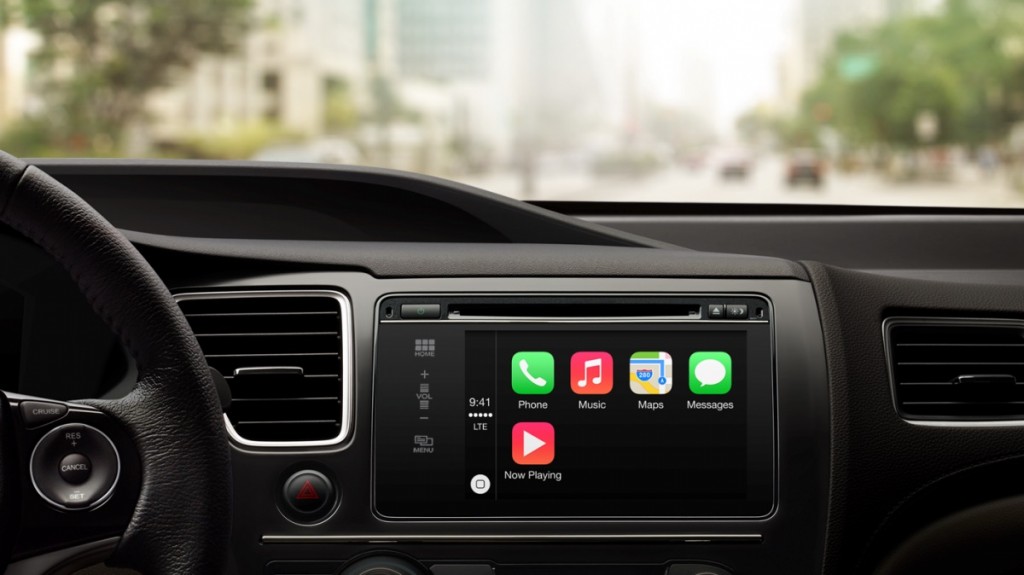
It has quickly become apparent that autonomous vehicles will change the way we move in the near future. Not only do they promise to give commuters precious hours of their day back, they could do away with the entire notion of car ownership. Cities, built today around automobiles, will reshape themselves to fit this new reality.
Car manufacturers see the writing on the wall, and they aren’t dragging their feet. Mercedes, Audi, Ford, and others have revealed that they’re developing technology to remove humans from the driving equation. Sensing an opening, outsiders want in, like Google, which has been kindling the self-driving fire for years. Even Apple is apparently interested, and that has a number of people asking, why? Currently, Apple doesn’t make anything bigger than a 27-inch all-in-one computer. A car is orders of magnitude larger and substantially more complex.
Some people speculate it’s because the next “screen” for a company to dominate is in the car, and if Apple wants to expand, they need to more aggressively court drivers (or rather, future passengers). Others say that because it is sitting on such a huge pile of cash—and several of its executives are obsessed with cars—why not? One person even thinks that Apple feels pressured because Google’s doing it.
There may be some truth in those hypotheses, but fundamentally, they’re all different degrees of wrong.¹ The one answer that explains it all is that Apple isn’t a computer company anymore. It’s a design firm, the likes of which we’ve never seen.
Back in 2007, Apple dropped the “Computer” from its name, becoming simply Apple, Inc. It happened the day the iPhone was announced and at the peak of the iPod era. Many argued that the company was simply acknowledging that as music became more important to the bottom line, they couldn’t keep calling themselves a computer company.² In reality, there may have been another reason, one that is more philosophical than tangible: The name change allowed them to focus on more than just computers.
In a way, Apple has always been a design firm, just one with a singular focus. Steve Jobs used to push people at Apple to “make a dent in the universe”. That’s how design firms think, not companies that just make computers. They consider a problem and try to devise the best solution. Computers are the solution to a set of problems, but they’re not a solution for all of them.
Few things are in greater need of a solution than transportation. Automobiles account for nearly 20 percent of all greenhouse gas emissions in the United States. Collectively, Americans waste billions of hours a year stuck in gridlock. And by one estimate, parking spaces in the U.S. could occupy up to 24,000 square miles—as much as West Virginia. Extrapolate those numbers to a global scale and you quickly see why Apple might be compelled to put a dent in that universe.
Good design firms believe that they can not only find a solution to a problem, but that they can find the best solution to the problem. I think that Jony Ive and his team, despite their apparent modesty, honestly think that way. And for a long time, the transportation problem has been staring them in the face. Many on the team commute from San Francisco to Cupertino, and the traffic on that drive can be horrendous. While stuck in gridlock, they’re confronted with ill-conceived conveyances and distracted drivers. Plus, they probably feel some measure of guilt about their carbon footprint.³
Certainly other design firms have offered their solutions to the problem of transportation, and several are quite promising. But none of those firms actually make things. That’s where Apple can make a difference. Apple isn’t just different from other computer makers because of their design-centric attitude, it’s also different from other design firms because they manufacture and sell the products they design in huge quantities. Few companies are as well positioned to not just offer a solution, but deliver it.
Viewed through that lens, it’s not surprising that Apple is designing a car. In fact, I wouldn’t be surprised if, after the car is released, the company starts looking for another design problem to solve, maybe one a little closer to home.
- Apple has CarPlay, which is increasing in adoption, giving it a commanding slice of in-car screens. “Why not?” is a terrible reason to do anything. And Apple doesn’t follow Google on everything, in part because they have vastly different business models. ↩
- Remember, back then we still thought “computer” meant desktop or laptop. How quaint. ↩
- Granted, if you drive an eight-cylinder Bentley Mulsane and own a private jet, you probably don’t feel that guilty, but I’m guessing it’s crossed his mind. ↩
Related posts:
How self-driving cars will change cities
How far should you live from work?
In 40 years, will self-driving cars send us packing for the suburbs?